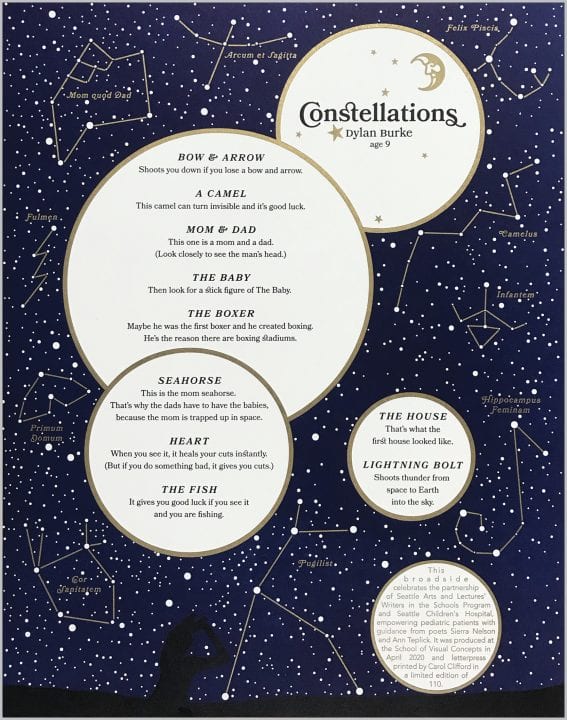
A Decade of Letterpress: Carol Clifford
December 23, 2020
Each year, in a project led by Sierra Nelson and Ann Teplick of Writers in the Schools, and the School of Visual Concepts, long-term patients from Seattle Children’s Hospital and a team of letterpress artists join forces to create an extraordinary collection of handprinted, limited-edition broadsides. In 2020, the Letterpress Program at the School of Visual Concepts became a new organization, Partners in Print, in order to maintain meaningful community collaborations like this one.
These works of art—which you may have oohed and aahed over at the SAL info table at in-person events or seen at local libraries or galleries as they toured around Seattle—are always colorful, fantastical, and deeply felt.
To celebrate a decade of this letterpress project, we’ve asked artists behind the press to give us an inside look at the process of turning youth poetry into art in a series of retrospectives on some of their favorite pieces over the years. Below, Carol Clifford talks us through that process, focusing on “Constellations,” a 2020 broadside created using a poem by Dylan Burke (then age 9).
How many years have you participated in the project?
I’ve been participating since 2011, from the beginning, so for ten years.
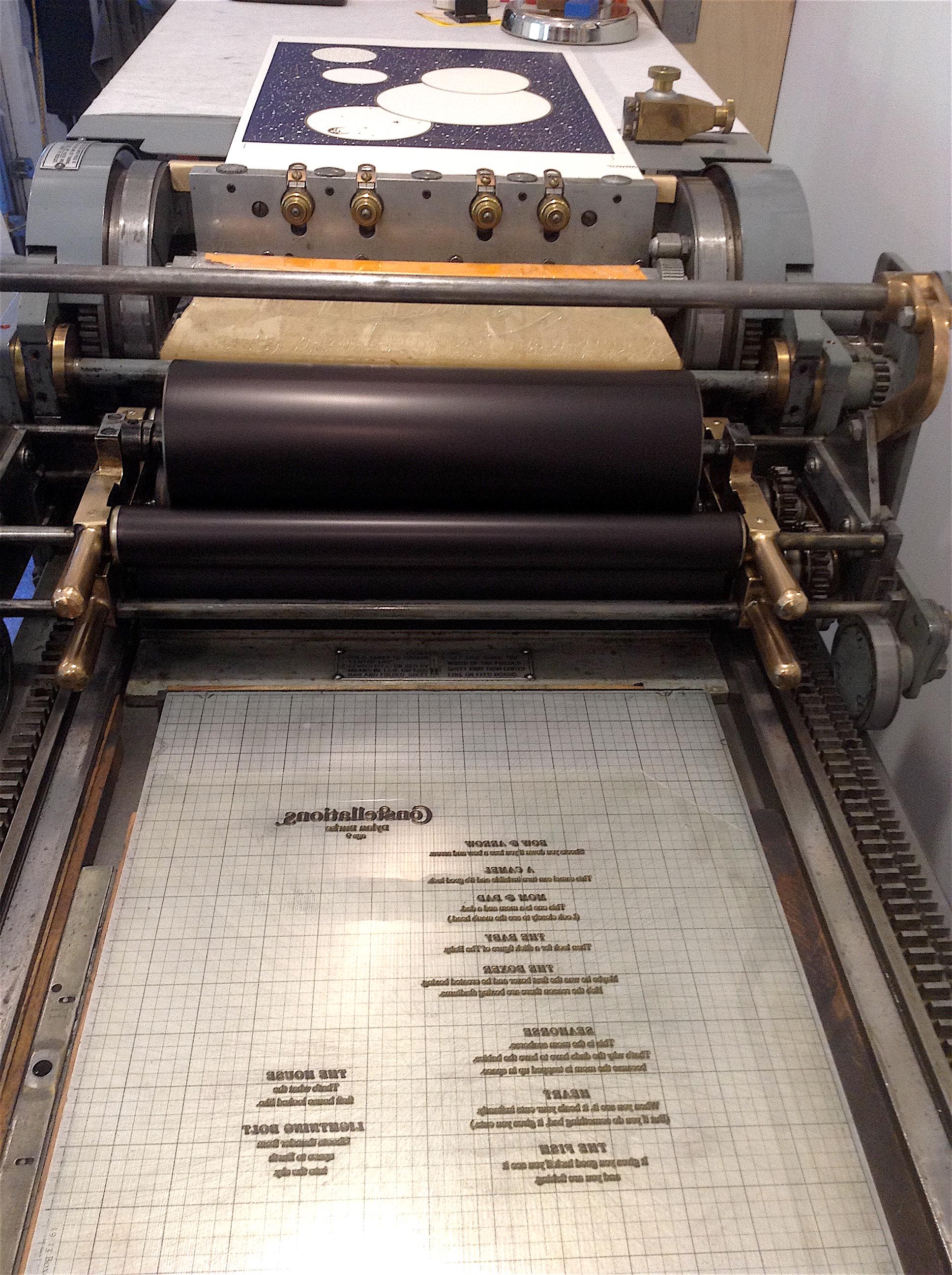
What drew you to the poem you worked with?
I’m usually drawn to about three poems each year. In “Constellations,” I appreciated the imagery Dylan was conjuring up with the different constellations. I also liked that this poem didn’t require a super literal interpretation, so I was free to play with the lines in a very loose way. I have worked with constellation imagery in previous broadsides for Seattle Children’s Hospital poems, and I like the challenge and the depth of color you can get when creating a nighttime sky. Also, I am a fan of using gold metallic ink, and it works best when printed on top of a dark color.
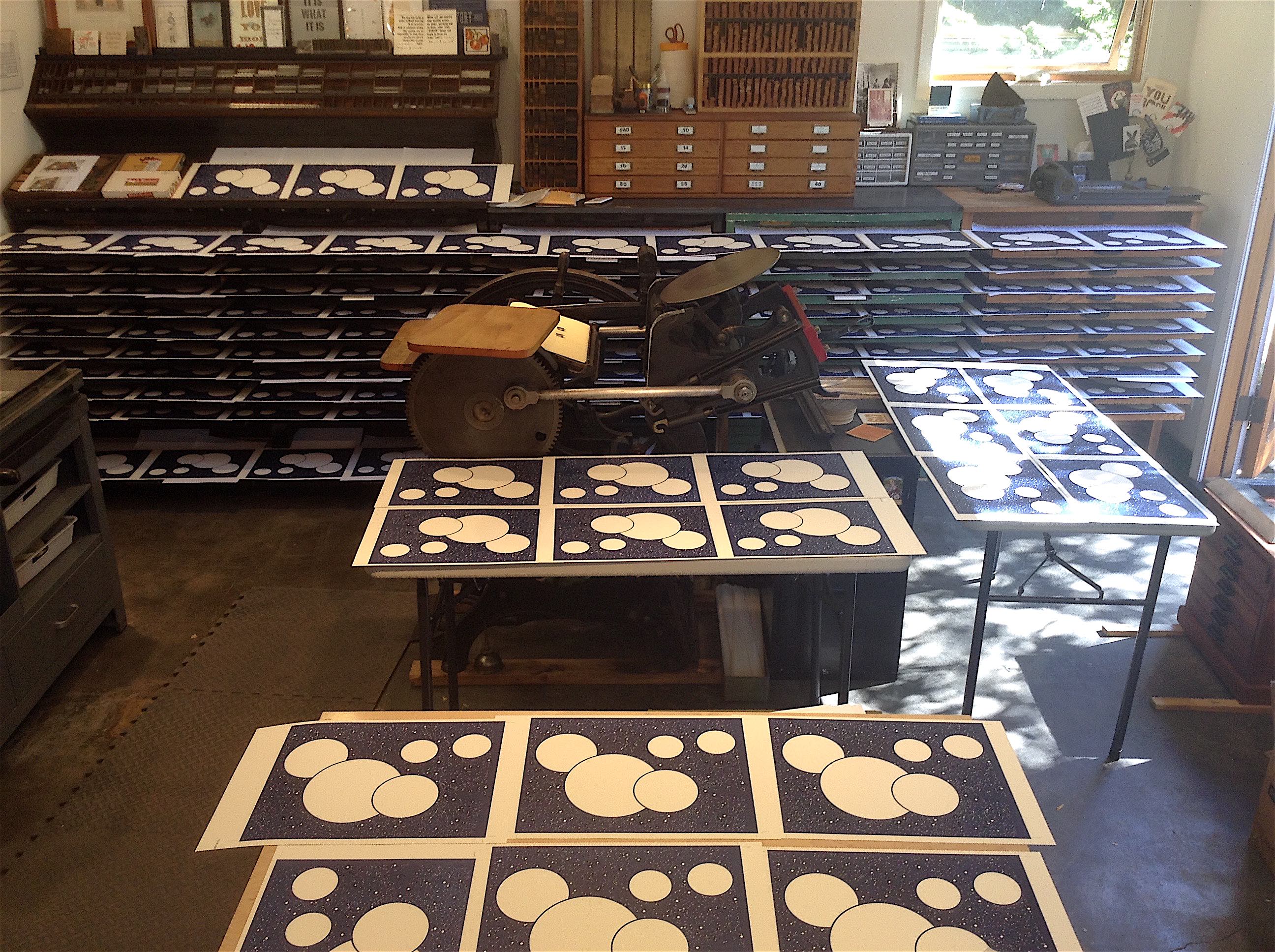
Where did you find your inspiration?
I found them in the words of the poem, and then I thought about how best to present the poem to the young poet. I had the good fortune this summer to camp under the stars for six nights, and I thought of how I could convey this experience to Dylan. When I go camping, I love the fact that the sky doesn’t have the light pollution we have in the city. I wanted to capture that awesomeness we rarely get to experience living in the city. I wanted Dylan to feel the expanse of a clear, pollution-free starry night.
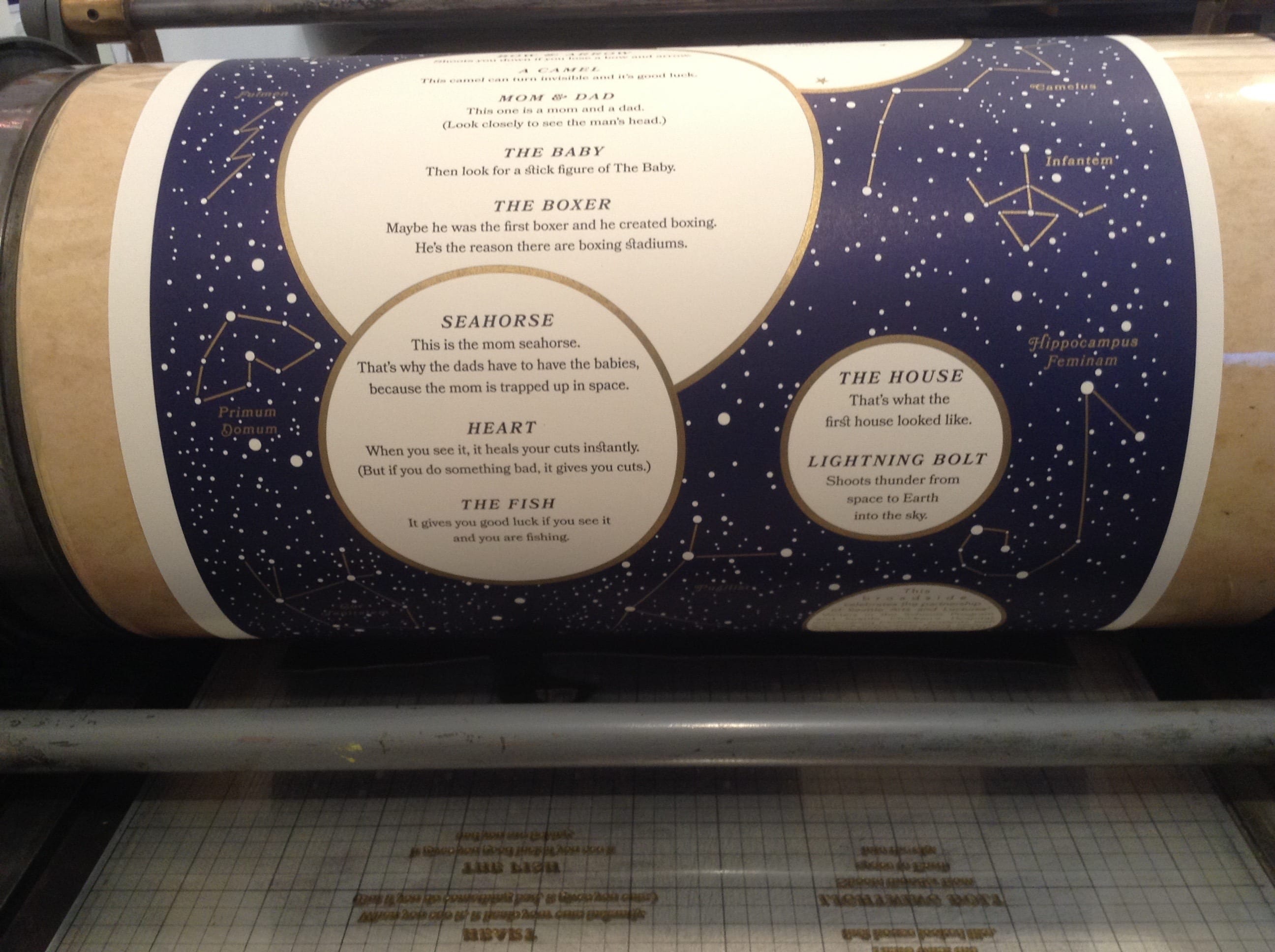
What’s the process like to turn a poem into a broadside?
It begins with lots of thumbnail sketches to find the overall feel of the broadside, along with different ideas for specific imagery or words I’m drawn to in the poem. With this particular poem, I wanted to show each constellation and needed to figure how to get all ten of them to fit. I gave the viewer binoculars to show their curiosity to see more than what you can see with the naked eye. Once I settled on the composition, it was a matter of how to get all the words to fit—what would I need to do to get them all to fit, and still have the broadside be visually interesting and readable? It’s hard to print words on a dark background and be clear enough to be read, so I thought of the circles as magnified stars or planets. This helped provide not only a plain background for readability, but it also added energy to the overall composition.
What’s your favorite part of the project as a whole?
I love the initial poem picking meeting to see which poems printers are drawn to, and I especially like seeing the final prints. Every printer comes at their design so differently, and I find the final results endlessly interesting. The printers help me to see a poem differently than when I first read it.
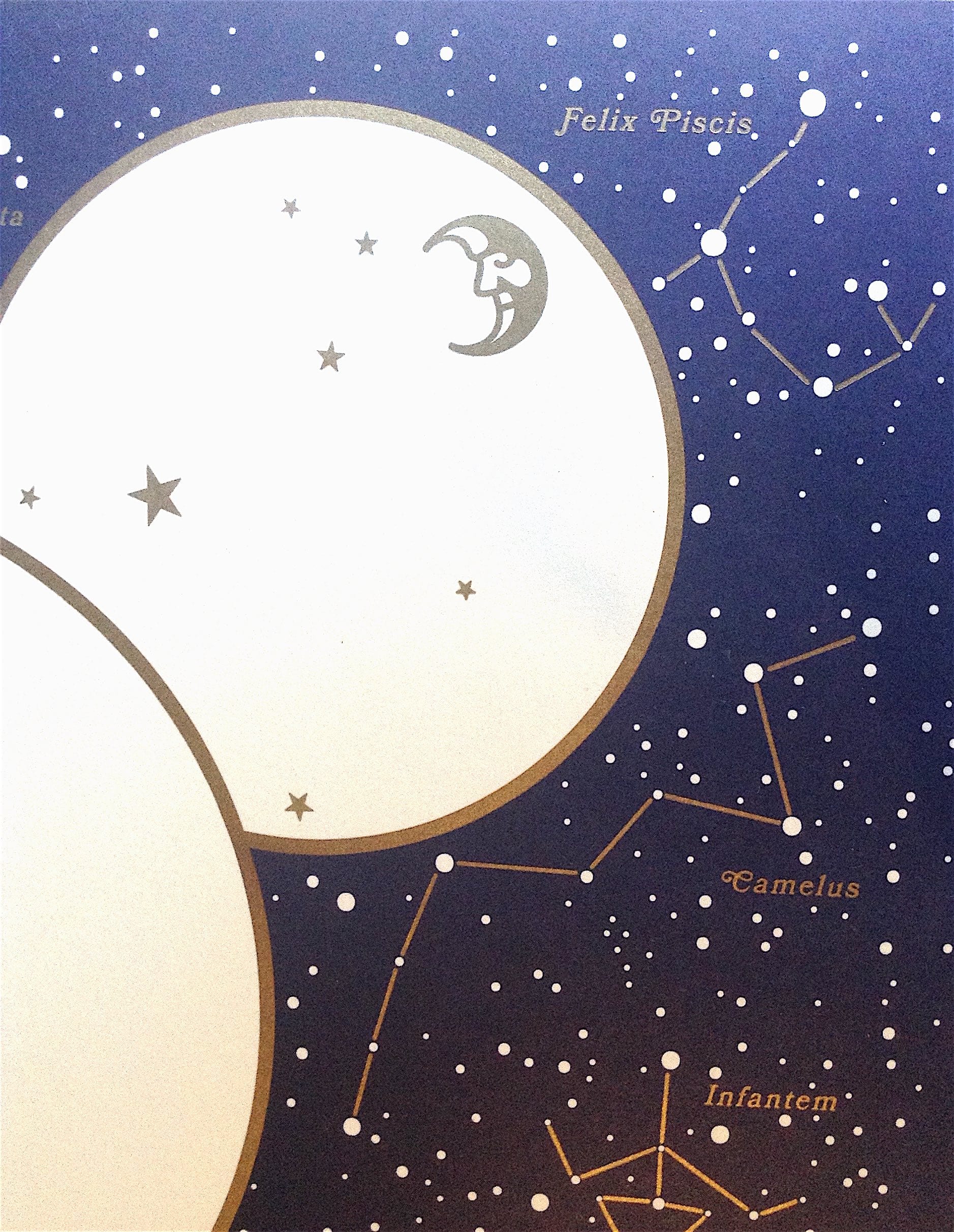
Did this piece have any false starts or happy accidents?
Well, the false start was not the fault of the poem, but of the pandemic. I began working on the ideas for this piece shortly after picking the poem, but then life interfered, and I found myself constantly distracted and struggling to find the headspace to focus. I was relieved when a new deadline was set, which allowed me to get my head back in the game and provided a pleasant distraction from the big picture. Once I was on course to print, the process, thankfully, went smoothly—which wasn’t a happy accident so much as it was just a huge relief. It doesn’t always go as smoothly. The stars must have aligned for me this year.
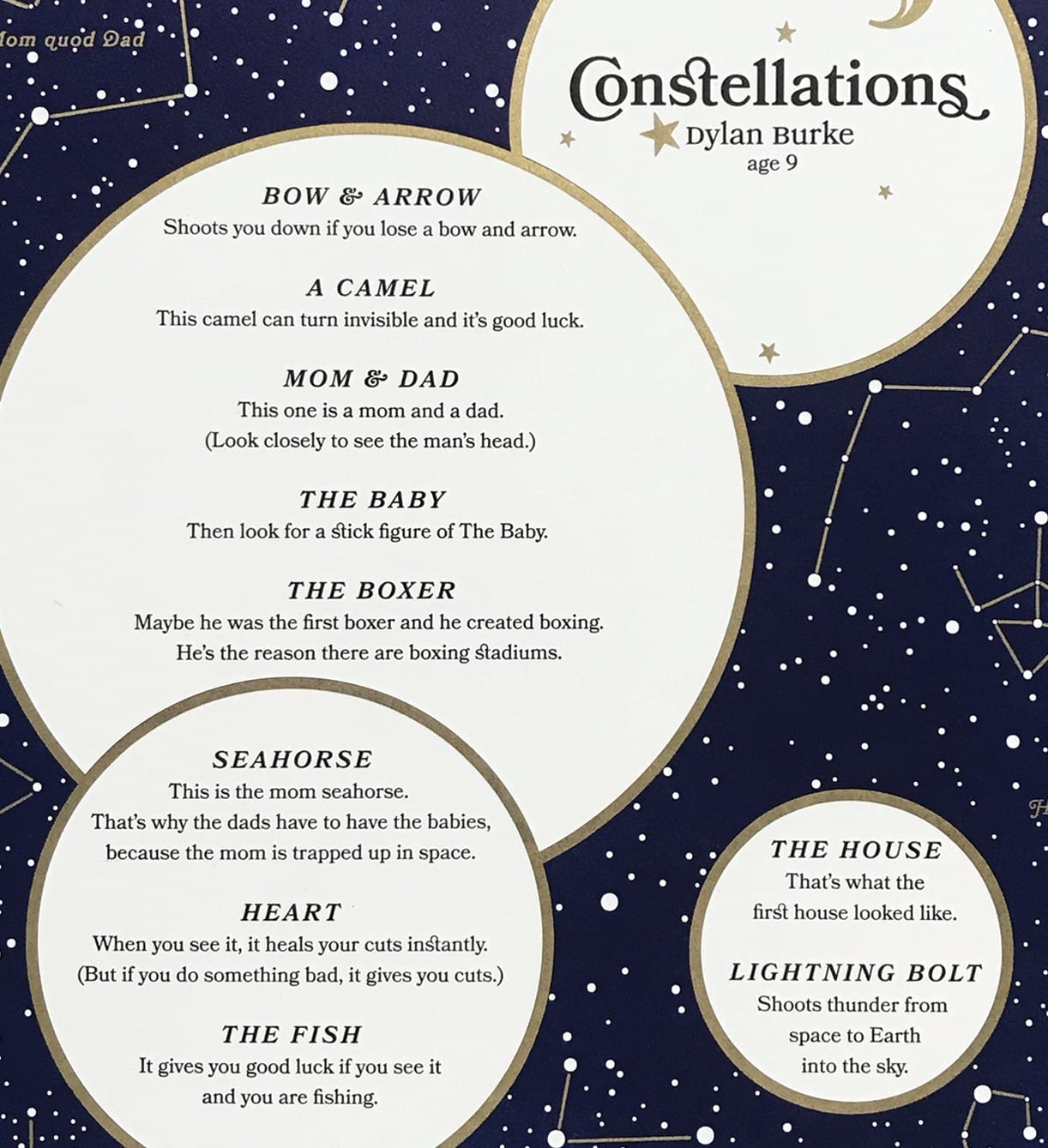
When you are not working on this project, what do you do?
I make stationery and art prints for my small letterpress business, Orange House Press. I also work at Greg Kucera Gallery which has, most fortunately, managed to survive through the pandemic. I garden. I walk. I generally just got out in nature as much as possible.
Thank you, Carol!